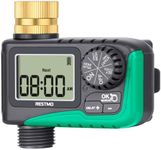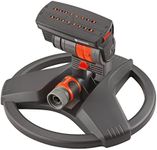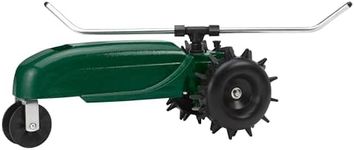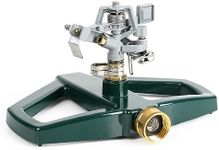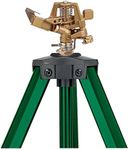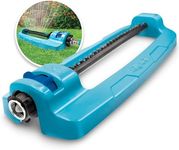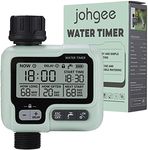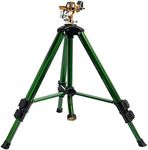Buying Guide for the Best Motion Activated Sprinklers
Choosing a motion-activated sprinkler can be a smart way to protect your garden, lawn, or property from unwanted animals or to automate watering. The right model for you depends on your specific needs, such as the size of the area you want to cover, the types of animals you want to deter, and how much control you want over the system. Understanding the key features will help you make a choice that fits your situation and ensures reliable performance.Detection RangeDetection range refers to how far and wide the sprinkler can sense motion. This is important because it determines the area that will be protected or watered. Short-range sensors (up to 20 feet) are suitable for small gardens or targeted spots, while medium-range (20-40 feet) and long-range (over 40 feet) are better for larger yards or open spaces. To pick the right one, consider the size of the area you want to cover and whether you need to detect motion at a distance or just close by.
Spray Coverage AreaSpray coverage area describes how much ground the sprinkler can reach with its water spray. This is important for both deterring animals and watering plants. Some sprinklers have a narrow, focused spray, while others can cover a wide arc or even a full circle. If you have a small flower bed, a narrow spray is enough, but for a large lawn, look for a model with adjustable or wide coverage. Think about the shape and size of your space to decide what coverage area fits best.
Sensitivity AdjustmentSensitivity adjustment lets you control how easily the sprinkler is triggered by movement. This is important to avoid false alarms from wind or small animals if you only want to deter larger pests. Some models allow you to fine-tune the sensitivity, while others have fixed settings. If you have a lot of activity in your yard, or if you want to avoid unnecessary water use, choose a model with adjustable sensitivity so you can match it to your needs.
Power SourceThe power source is how the sprinkler operates—usually batteries, solar power, or a direct connection to electricity. This matters for convenience and placement. Battery-powered models are portable and easy to set up anywhere, but need regular battery changes. Solar-powered options are eco-friendly and low-maintenance if you have enough sunlight. Plug-in models offer consistent power but need to be near an outlet. Choose based on where you want to place the sprinkler and how much maintenance you’re willing to do.
Water Connection TypeWater connection type refers to how the sprinkler attaches to your water supply, usually via a standard garden hose. Some models are compatible with quick-connect systems, while others require a screw-on connection. This is important for ease of installation and moving the sprinkler around. If you plan to move the sprinkler often or want a quick setup, look for a model that matches your hose system and is easy to connect and disconnect.
Durability and Weather ResistanceDurability and weather resistance describe how well the sprinkler can handle outdoor conditions like sun, rain, and temperature changes. This is important for long-term use, especially if you plan to leave it outside year-round. Look for models made from sturdy materials like metal or high-quality plastic, and check if they are rated for UV and water resistance. If you live in an area with harsh weather, prioritize a model that is built to last.
